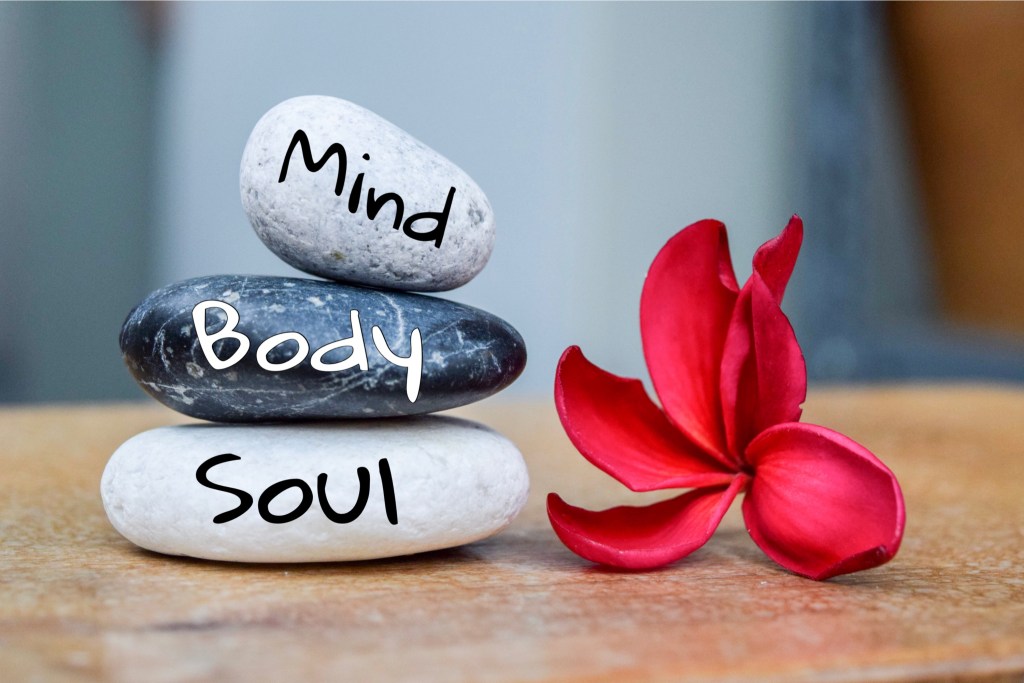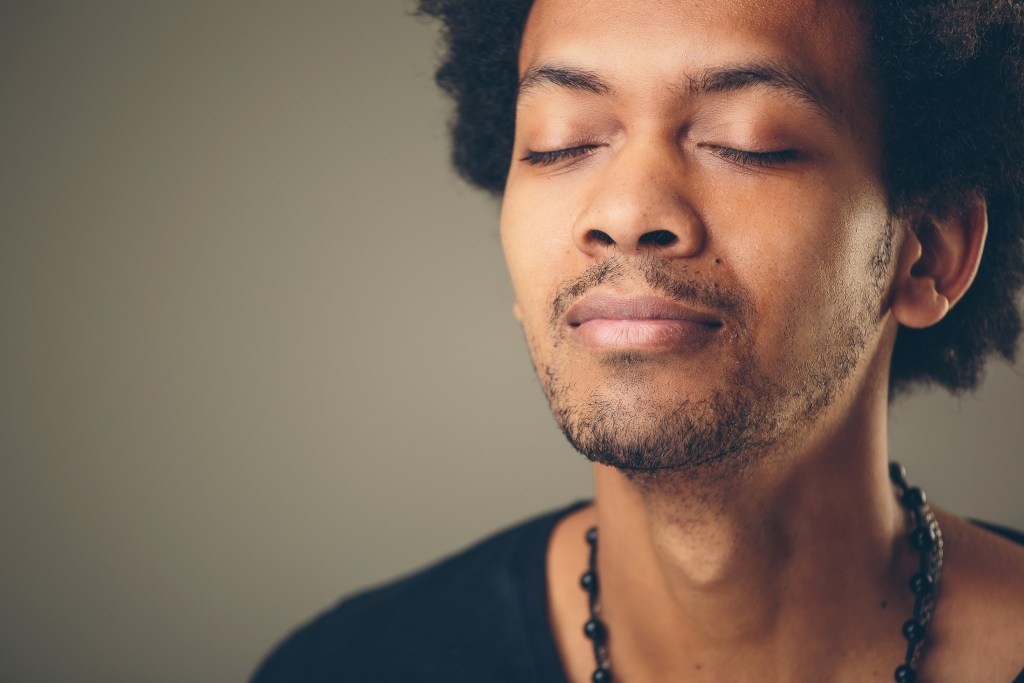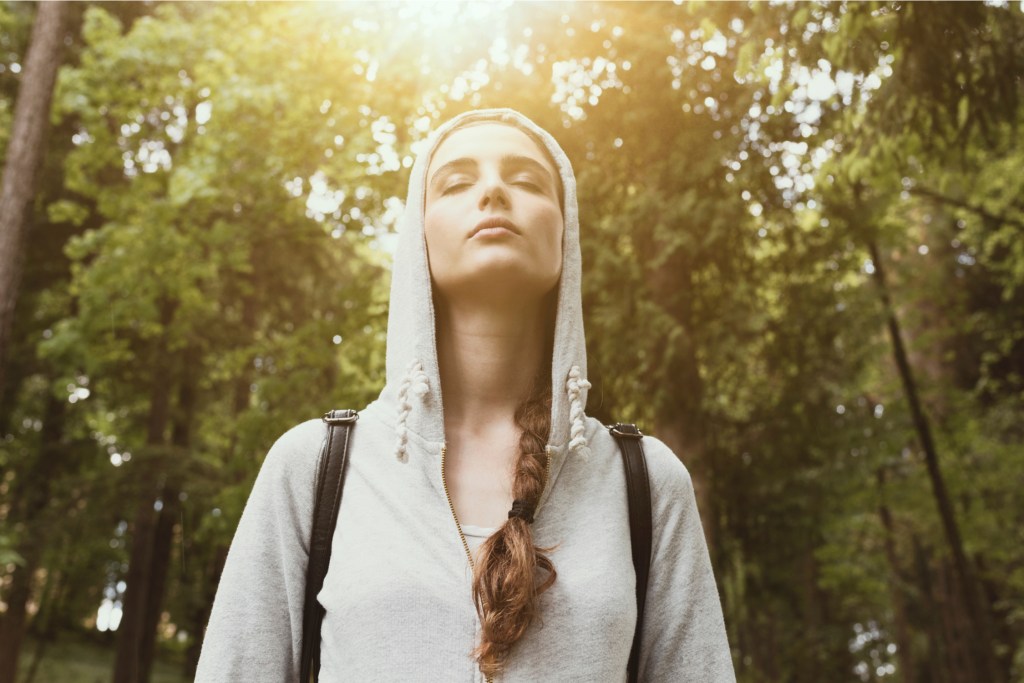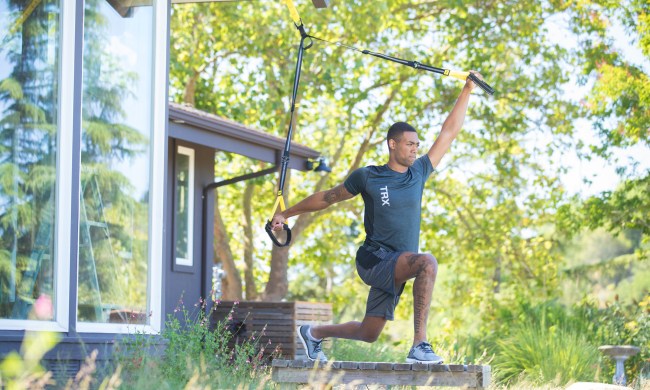Between work, family responsibilities, financial concerns and even everyday activities (getting groceries, taking the kids to soccer practice, cooking dinner, etc.) life can get overwhelming. Throw in a pandemic that turned the world as we knew it upside down, and sometimes it can feel like it’s hard to breathe. But what if you focused on those breaths instead of holding them in? That alone can make a world of difference according to those who practice mindfulness.
Though the practice has ancient roots, mindfulness is undergoing a renewed interest during these turbulent times, when so many of us are focusing on wellness. With benefits to the brain, body, and relationships, practicing mindfulness might just be the ultimate form of self-care.
What mindfulness is (and isn’t)
There was a time when mindfulness was associated with a yogi sitting cross-legged, meditating on a mountaintop. And, although mindfulness can incorporate mediation, it’s about much more than that.
“In the simplest terms, it means paying attention,” says Stacy DiGregorio, a mindfulness educator, yoga instructor, and founder of Lotus Heart Mindfulness in Tampa, Fla. “For a longer definition, I love to use Jon Kabat Zinn’s definition, ‘Mindfulness is awareness that arises through paying attention, on purpose, in the present moment, nonjudgmentally.’” (Jon Kabat-Zinn is considered a guru of mindfulness, bringing ancient Buddhist meditation practices to the U.S. in the late 1970s and later founding the Mindfulness Based Stress Reduction program at the University of Massachusetts Medical School.)
Practicing mindfulness can help manage stress, anxiety, worry, and pain, and can also help us better our relationships with others. It is something anyone can do and reap benefits from, according to Holly B. Tiret, who’s senior extension educator for social-emotional health at the Michigan State University Extension Center in Grand Rapids, and also teaches mindfulness.
“We are all experts in ourselves, yet sometimes we lose touch with that fact,” she says. “Mindfulness offers a way to learn to stop and pay attention to our own thoughts, feelings and emotions in a kind and compassionate way. By learning to acknowledge and accept what is going on in any given moment, we give ourselves room to decide with grace and self-awareness how we wish to respond to those life moments, if at all.”

Practicing mindfulness doesn’t mean you’ll never have negative emotions – you’ll just be better equipped to handle them when they come along. “One big misconception about mindfulness is that when you are mindful, you just walk around in some sort of blissful state always calm and devoid of strong emotions like getting angry or feeling sad,” says DiGregorio.
Instead, although it might seem like a contradiction, mindfulness actually offers a way for you to get out of your own head because it teaches you to recognize that while you might not be able to control every situation, you can control your reaction and response to whatever comes along. It also focuses on being present in the present, instead of living in the past or worrying about the future.
“Our brains are hard-wired to go down the same pathways we have before, to have the same thoughts, reactions, and emotions every time something happens,” says Tiret. “In addition, our human brains have an imbalance of negative to positive thoughts at a 1:7 ratio, according to researchers. Mindfulness offers a way out of that trap by learning to practice that pause, slow down to notice what is going on in your own body and mind, pay attention on purpose to that feeling, thought or emotion, and then shift to some mindful skill like breathing to help you gain balance.”
Mindfulness is also different from meditation, says DiGregorio. “Very often people think the two are interchangeable,” she says. “There are many different types of meditation — transcendental, visualization, and others — and mindfulness meditation is one of those types. Mindfulness meditation is the formal practice of mindfulness.”
You are not your thoughts
One of the principal tenets of mindfulness is instead of trying to fight unpleasant thoughts or emotions to recognize them without judgment and understand that you are not your thoughts. DiGregorio says doing so means applying the definition of mindfulness — “paying attention, on purpose, to the present moment without judgment” — to your thoughts and feelings.
“It’s easy to get caught up in the swirl of stuff in our minds, the memories, stories, plans, fantasies, etc. But our thoughts aren’t really what’s happening. They aren’t reality. They are just thoughts that come and go. With practice, one can learn to simply observe them, to watch them come and go like clouds in the sky,” says DiGregorio.
It’s also completely normal to want to get rid of bad feelings such as anger, sorrow, or fear, and hold on to “good” feelings such as happiness, ease, and joy. “With a mindfulness meditation practice, one can learn to be with the emotions as they arise, to take a step back and feel the emotion,” DiGregorio adds.
As we’ve all probably experienced, trying to push away unpleasant thoughts and feelings, be they physical or emotional, doesn’t work, says Tiret. “Unfortunately, the more we push away or try to ignore them, the more they tend to hang around and become even more bothersome, like trying not to think about a pink elephant,” she says. “Mindfulness encourages embracing those thoughts, feelings, emotions, and investigating them with kindness. If it is helpful, keep it. If it is just annoying, brain-generating noise, let it go.”
Start with your breath and take it from there
While many of us make time for our bodies, we neglect to make time for our minds — and that would be a mistake. “If you were planning on running in a marathon, you would need to train every day, so that on the day of the marathon you are in the best shape possible to be your best self. It is like that with using mindfulness for stress, anxiety, and even chronic pain,” says Tiret. “Mindfulness is like retraining your brain to go down a different pathway when you are stressed, anxious, or in pain. It takes daily, intentional practice.”
Anyone can begin to practice mindfulness by simply observing their breath, says Tiret. “Just take a minute to start noticing your breath. Notice how the air feels as you breathe in and how it feels when you release it and breathe out. No need to go any faster, slower, or deeper than normal. Just start with your normal comfortable pattern of breathing. Anyone can try this at least one minute at a time, any time of the day,” she says.
If you practice this over time, your breath will become something of a “safe space” that you can always turn to because it’s always with you. “Build up your capacity to use your breath as a calming place in your brain and body,” says Tiret. “The more you can train your brain when you are calm to pay attention and focus on your breath, the more it will be ready for the ‘marathon’ of stress, anxiety, and pain whenever they pop up and surprise you.”
You can also bring mindfulness to your daily life in many ways, says DiGregorio. “Since mindfulness is about paying attention, on purpose, you can bring mindfulness to eating, to washing your hands, to driving home from work, taking a walk, being with your kids, or with meditation,” she says.
If you want to learn more about mindfulness, DiGregorio says finding a mindfulness teacher is a great place to start. Tiret also recommends taking advantage of free resources such as guided audio recordings for mindful breathing or free online mindfulness classes offered through the MSU Extension. If you want to learn more about meditation, there are also plenty of apps for that including Insight Timer, Headspace, and Calm.
3 ways to bring mindfulness to your everyday life
The great thing about mindfulness is you don’t have to do anything special — you can practice it while doing the things you do every day. “I think that very often people think that they must do a seated meditation for a half-hour, and while that’s great and I highly recommend it, you can incorporate mindfulness in your daily life without even meditating,” says DiGregorio.
Three easy ways to practice mindfulness are:
Washing your hands mindfully. This is DiGregorio’s favorite. Her guidance: Pay attention to all the sensations that go with washing your hands starting with the feel of the faucet handle. If you’re at home, notice how you don’t even have to think about which way to turn the faucet. Notice the wetness of the water and what that feels like, the temperature, the feel of the soap, maybe the scent of the soap, the feel of your hands, and all the sensations that are available to you when you wash your hands.
While you are brushing your teeth, just brush them. Tiret’s guidance: Pay attention to how the toothbrush feels on your teeth, how the toothpaste feels, how your tongue and mouth feel. When you rinse, enjoy swishing the water around. If you do that every day, you have already added two minutes of mindfulness to your everyday life, says Tiret.
Practice mindful walking. This means walking without a purpose or destination, according to Tiret. Instead of thinking about problems or your to-do list, she advises paying attention to each slow step, to each time your foot is placed on the ground, and how it feels to shift your weight. Include a few minutes of “noticing” during your walk. Notice your feet, your legs, your breath, the air, the trees, and the sky.
Remember, you can bring mindfulness to just about anything, anytime, and anywhere, says Tiret. “Try a mindful minute of washing dishes, washing your hands, folding laundry, eating breakfast. Sneak it in a minute at a time during your day. Remember the wise words of Jon Kabat Zinn, ‘Pay attention, on purpose, in the present moment, with a nonjudgmental attitude,’” she says.
BlissMark provides information regarding health, wellness, and beauty. The information within this article is not intended to be medical advice. Before starting any diet or exercise routine, consult your physician. If you don’t have a primary care physician, the United States Health & Human Services department has a free online tool that can help you locate a clinic in your area. We are not medical professionals, have not verified or vetted any programs, and in no way intend our content to be anything more than informative and inspiring.







